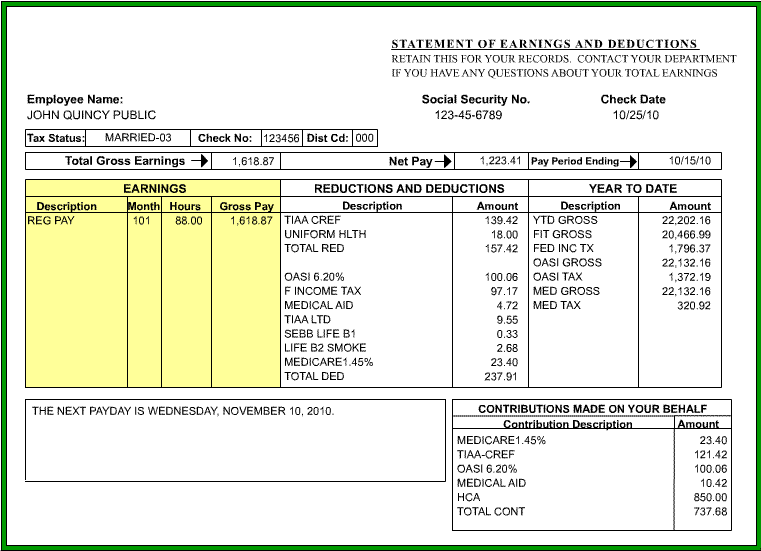hrpaych-Earnings
Description
This column provides an abbreviated description of the type of earnings paid.
The primary earnings types are:
| Reg Pay | Regular Pay | |
| Reg Academ | Regular Academic | |
| RA/TA Reg | Research Assistant/Teaching Assistant Regular | |
| Hourly | Hourly | |
| Piece Work | Piece Work | |
| Fed Reg | Federal Employee Regular |
To view the entire list of earnings descriptions, click here.
Months
This column represents two items. The first two numbers represent the number of the payment month. The third number represents either a ‘1’ for payment for time from the first half of the month, i.e., day 1 through day 15, and the number ‘2’, which represents payment for the second half of the month, i.e., day 16 through the end of the month.
To view the acceptable month values, click here.
Hours
If the word ‘Reg’ appears in the earnings description, then the value of hours in this column represents the number of scheduled days to be paid in the current pay cycle. The values in the column may vary each pay cycle, but full-time employees most likely will see total hours anywhere from 80.00 to 96.00 in a pay cycle.
If you are paid on a temporary appointment basis, the hours worked (or pieces completed in the current pay cycle) will appear in this column. Always keep track of the number of hours you worked in the pay cycle to ensure you actually were paid the proper number of hours.
Gross Pay
If you are paid on appointment, such as faculty, administrative/professional, staff or graduate student, you are paid on an ‘Exception Pay’ basis, which means you receive the same gross pay each pay cycle no matter how many hours you actually work.
Your gross pay reflects appointment changes such as a periodic salary increase or a temporary upgrade. When you work fewer than the scheduled hours, your gross pay will be lowered to reflect any leave without pay.
If you are paid on a temporary appointment such as an undergraduate student, you are paid on a Positive Pay basis which means you are paid for the actual number of hours worked (or pieces completed) in the pay period. Your gross pay will be the result of the number of hours worked multiplied by the hourly rate of pay or if paid by the piece you’ll receive the result of the number of pieces completed in the pay cycle multiplied by the rate per piece.
